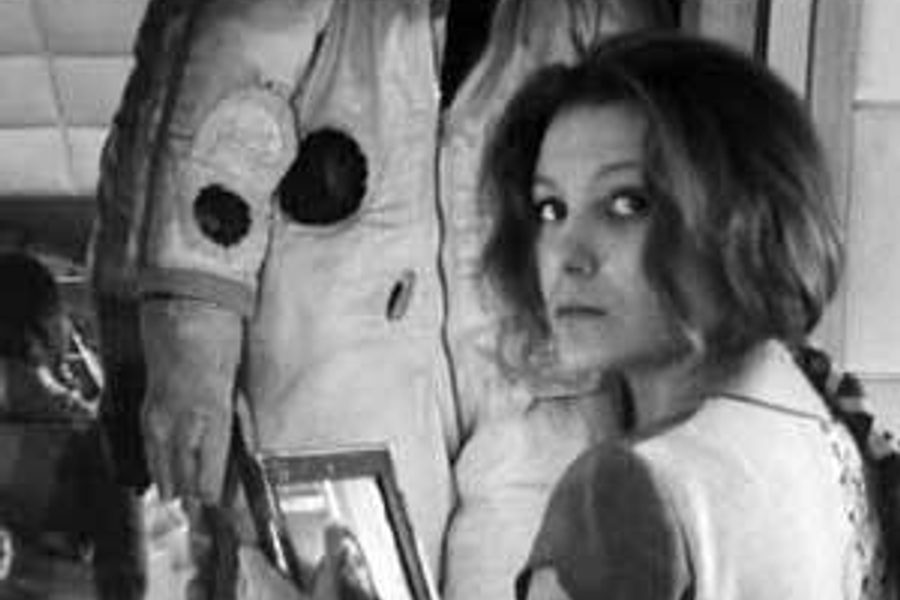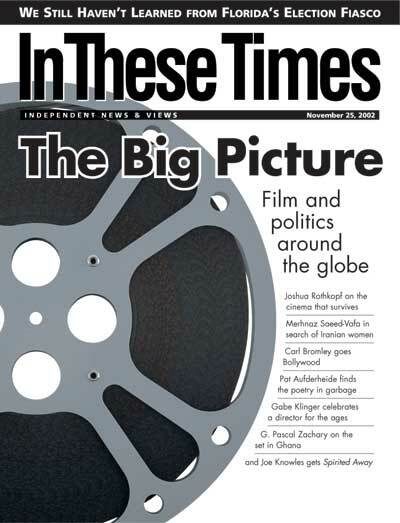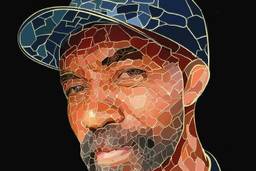
Women and cinema are controversial, problematic and significant topics in modern Iran, a nation that benefits from an unexpectedly rich film tradition, as well as the active participation of women in all areas of society, including filmmaking.
But to what extent are the portrayals of Iranian women in film close to reality? In the absence of other venues of literary and cultural information, Iranian movies have become a pivotal source of reference for Western viewers, who often politicize the films well beyond their original intentions, reading images and gestures as highly charged symbols. In a country like Iran, which has been undergoing a thorough cultural transformation and identity crisis, the evolving image of women is an important issue. Obviously, censorship and the dominant male view, as well as social, cultural and religious taboos, have all played significant roles in allowing certain female characters to appear onscreen while keeping the rest off.
Women have been depicted as incomplete, unreal, idealized — in short, marginalized — for a number of years, for reasons mainly to do with the conservative condition of Iran after the revolution. Challenging these reductive images of women are the women themselves, with their increasing representation in many venues, notably film production. A review of the past two decades of Iranian cinema and its social and cultural history will throw some light on this issue of women and their relationship to the screen, both in front of and behind the camera. When did they start to appear in film — and why? And where they are now?
— — — — –
Right after the revolution, Hollywood films were banned, and Iranian filmmakers were instructed to make films to educate and promote moral values and the revolutionary spirit. A film’s script, its talent, crew, director and final release all had to be approved by the Ministry of Islamic Guidance. Their new set of codes and standards, established in 1982, provided specific guidelines and policy for all areas of film production. For example, women were to appear only in hejab (Islamic dress code) and not make any physical contact with male actors. Themes and characters disrespecting or violating the values of Islam and revolution were forbidden.
These standards all but implied a cinema that had to be didactic, since its goal was to purify the minds of audiences and the movie culture in general from “corruptive” images that would promote “wrong and evil.” As a result, characters had to appear as good role models, especially women, traditionally treated as the carriers of honor for family, community and nation. They had to emerge as selfless mothers, obedient wives and pious daughters.
A natural implication of these policies was an inherent denial of existing social ills. Prostitution, alcoholism, drug addiction, domestic violence, rebellious children, marital infidelity, confused characters, sinners and political dissidents were all absent and removed from movies produced in the early ’80s. Many filmmakers began to censor themselves, not only to stay away from trouble, but to avoid the artificiality of scenes of domestic intimacy where married women had to be covered at all times and refrain from any kind of physical contact with their husbands. As a result, private scenes with women were replaced by public ones; the exterior situation of a woman took over her interior struggle.
But for the most part, directors avoided female roles altogether. With the exception of Bahram Bayzaie, who often cast women in strong leading roles in films like Bashu, the Little Stranger (1985), other established directors offered work almost completely peopled by men: Abbas Kiarostami’s First Graders (1984), Dariush Mehrjui’s The School We Went To (1980), Amir Naderi’s Runner (1984) and Mohsen Makhmalbaf’s Boycott (1985).
Another factor was the eight-year war with Iraq, beginning in 1980, a year after the revolution. With national and ideological concepts of sovereignty threatened, the function of movies became even more significant in controlling the social spirit; the hardships of the war gave birth to “sacred defense cinema” — war films poised to reflect the concerns of the day. Many documentary and narrative films were made during this period with soldiers (and martyrs) as their central characters.
The roles for women in these films were non-existent or minimal at best, limited to the mothers of the soldiers and martyrs; these were the first parts for women on Iranian screens. In the absence of wives, glorified mothers were accepted almost immediately, a tradition that continues to this day in Bahman Farmanara’s recent Smell of Camphor, Fragrance of Jasmine (2000), with its idealized mute mother worshiped by a loving son. (Notably breaking from this tradition is Kiarostami’s latest, 10, in which a divorcee is constantly cursed at by her son, who blames her for their problems.)
Other variations include the mother as financial burden, as in Alireza Davudnejad’s The Need (1992), and the mother as troubling preoccupation, as in Makhmalbaf’s Marriage of the Blessed (1988), in which a tortured-soul war hero constantly worries about his mother and wife, far from his world of revolutionary ideals. But the strong, nourishing mother, in tune with nature, as seen in Bashu, the Little Stranger, is the model: the ultimate source of comfort, love, security and identity. To what extent mothers are substitutes for wives or single women I’ll leave for another discussion, noting as well the young boys that often replace adult men: Kamal Tabrizi’s Mother’s Love (1997) has an orphan boy longing to be adopted by his young female social worker.
— — — — –
With the exhaustive war taking its toll, the latter half of the ’80s and early ’90s saw a new demand for lighter fare; family melodramas and comedies surfaced, as well as a few films that questioned the war. Consequently, wives and sisters materialized as characters. The Westernized young women of Ebrahim Hatamikia’s From Kharkheh to Rhein (1993), Scent of Joseph’s Shirt (1995) and Minoo Tower (1995), sisters of Islamic militant brothers, are good examples of these new roles. The increasing emergence of women on both sides of the camera is very noticeable, as seen in Makhmalbaf’s industry documentary, Salaam Cinema (1994). Actresses such as Nicki Karimi, Fatemah Motamed-Aria and Roya Nonahali launched the beginnings of a new star system, their beautiful young faces (always framed by veils) attracting many to the theaters on top of their talents.
A period of high commercialization in Iranian cinema, these years coincided with the government’s withdrawal from subsidizing most films, and a subsequent economic depression that forced producers to resort to sensational melodrama to secure the box office. Behrooz Afkhami’s The Bride (1991) brought to the screen a version of (relative) eroticism so unsurpassed that for a while, it became forbidden to shoot close-ups of women wearing makeup. The idealization of young women on screen seemed to spread overnight as the age of stars steadily decreased; Majid Majidi’s later Baran (2000) broke the record by reducing the age of the beautiful-girl ideal to adolescence.
Major directors like Mehrjui turned to making films with women. Hamoon (1989), Banu (1991) Sara (1992), Pari (1994), Leila (1996) and his recent Bemani (2002) are all concerned with the struggles of young women, often idealized. For example, Sara, who leaves her unappreciative husband behind her, taking the kids in tow, is the direct opposite of what we see in Ziba Mir Hosseini and Kim Longinotto’s 1998 documentary Divorce Iranian Style, where the custody of children is automatically granted to men. The misery of Sara’s husband at the end of Sara is no match for his legal power in real life.
Makhmalbaf’s Gabbeh (1995) celebrates the beauty of a young tribal woman without really accessing her inner world; idealized rural women with their colorful clothes and exotic natures emerged as a character type in ’90s Iranian cinema. Kiarostami’s Through the Olive Trees (1993) critiques this idealization; in one scene, a director asks a village girl to wear her traditional clothes, but she insists on wearing modern dress.
Increasingly, male Iranian filmmakers were demonstrating an appreciation for the women’s movement and an awareness of international sympathies: Fereydoon Jayrani’s Red (1998) concerns itself with a young women who daringly attacks a man who is threatening her. Bride of Fire (2000), directed by Khosrow Sinai, is about an educated and modernized tribal woman who challenges her arranged marriage. Echoing the increasingly mobilized voice of Iran’s students, Ahmad Reza Darvish’s Born in September (2000) depicts the clashes of a young college student with her conservative father as she fights for her liberal ideals — including her leaving home to follow the man she loves.
— — — — –
But the most important breakthroughs arrived in the work of two women directors emerging in the late ’80s, Tahmineh Milani and Rakshan Bani-Etemad. Milani’s controversial Two Women (1998) contrasts the sugar-coated marital delusions of a well-to-do woman architect with those of her friend, trapped in a miserable marriage with a controlling, paranoid man. With this film, Milani introduced to the Iranian cinema the previously unexplored subject of a women’s identity in marriage.
Bani-Etemad, coming to features from a long career in documentary filmmaking, brings an expertise of the social concerns of working-class women. Her masterpiece Nargess (1991) portrays a young woman married to a thief; her strong will and goodness become his salvation. Bani-Etemad skillfully explores issues of unemployment, relationships outside of marriage and the sisterly bond between two women in love with the same man. Her most recent feature, Under the Skin of the City (2000), goes even further into realism, depicting the tribulations of a working-class mother bravely facing her family’s problems, which include domestic violence, drug addiction and more minor crimes.
By this point, Bani-Etemad and Milani were not alone, with other women filmmakers entering the field and, in the case of Marzieh Meshkini’s poetic The Day I Became a Woman (2000), even finding American distribution.
— — — — –
More than 20 years after the revolution, the rougher edges of female desperation finally begin to find their expression: Rasul Sadr-Ameli’s Girl in the Sneakers (1998) shows a young girl running away from home to be with her cowardly boyfriend, only to become disappointed by his hypocrisy. Sadr-Ameli’s follow-up film, I Am Taraneh, 15 (2002), concerns itself with the plight of a teen-age single mother challenging the legal and social system of Iranian family law. Sweet Agony (1998), by Alireza Davudnejad, focuses on the love between a boy and a girl in their teens, an affair in defiance of religious orthodoxy. The subject of prostitution emerges in Seyyed Reza Mir-Karimi’s Under the Moonlight (2000), Jafar Panahi’s The Circle (2000) and Manigeh Hekmat’s Women’s Prison (2002).
But images of Iranian women can remain problematic in their cinematic portrayal as mere types and not characters. In the interests of serving a message, even a feminist one, the films sometimes suffer: Alireza Raisian’s The Deserted Station (2002) mysteriously plops its well-dressed, middle-class woman in the middle of nowhere to deal with village children. All the audience is allowed to learn of motivation comes from her appearance. Similarly so with Babak Payami’s Secret Ballot (2002), which follows a young urban woman collecting votes with a soldier. The woman remains a type and never develops into a full character, either due to Payami’s interest in a metaphoric language or lack of interest in his characters.
But certain directors have still managed to be both conceptual and dramatic, taking care of people as well as the message. Kiarostami has a unique style of creating lively characters with insightfully observed detail, and his example has inspired such young filmmakers as Samira Makhmalbaf, whose The Apple (1998) is a uniquely realistic portrait of young girls and their community. Exam (2002), by first-time director Nasser Refaie, is an impressionistic yet closely observed look at bold young women rarely found in other films. Bani-Etemad’s aforementioned work has also pointed the way forward. These films — pioneered mainly by women — have signaled a sense of change and progress for women in Iran, both on and off the screen.





